
Weird foods and eating habits of British kings and queens – from Henry VIII to Elizabeth I and Victoria
Take your pick of royal favourites – from boar’s head and beaver’s tail, cockentrice and turducken to peacock as the star of a 14-course banquet
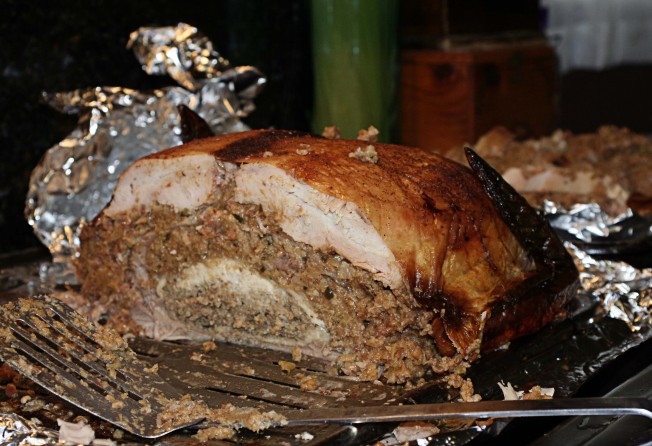
Although today’s British royals seem to follow healthy diets, that was not the case for their ancestors. Here are some of the weird foods and eating habits of earlier kings and queens.
Henry VIII
Ruling England from 1509 to 1547, this Tudor king of England was known as a consumer of food and women – he did have six wives.
His residence was Hampton Court where he had 1,000 attendants, 200 of whom worked as kitchen staff. There were 18 kitchens and 50 smaller rooms for preparing fish, making pastry and pickling and bottling – there were no refrigerators back then.
With so many mouths to feed, the great kitchen featured six open fires with spits constantly roasting pig and venison. It was estimated they burned six to eight tons of oak in the fireplaces daily.

For breakfast, he often ate pike, plaice, roach, butter and eggs. He always ate with 30 of his courtiers each day, with breakfast at around 10am.
Spit-roasted meats were central to the daily diet with pork or mutton eaten on a normal day with peacocks, herons, egrets, deer and swans served up on special occasions. Banquets were 14-course show stoppers with peacock often the star. After roasting, it was presented on the table with its blue feathers and gold gilded beak in place. There was also cockentrice and other strange delicacies.

1. Cockentrice – Henry VIII first served up cockentrice, a “mythical beast” featuring a pig and capon sewn together, in a bid to impress the King of France.
2. Boar’s head was usually garnished with bay leaves and rosemary and was a popular table centrepiece at Christmas.
3. Roasted swan – Swan was considered a noble bird during King Henry’s reign. It was usually presented on the table with a crown on its head.
4. Vegetables – Henry was not a fan and he considered them peasant food. But they were always on the banquet table, usually cabbage, broad beans, peas, leeks and onions.
5. Marzipan – as sugar was a scarce commodity at that time, sweet treats were not an everyday thing. This almond, sugar dessert was flavoured with cinnamon and pepper.
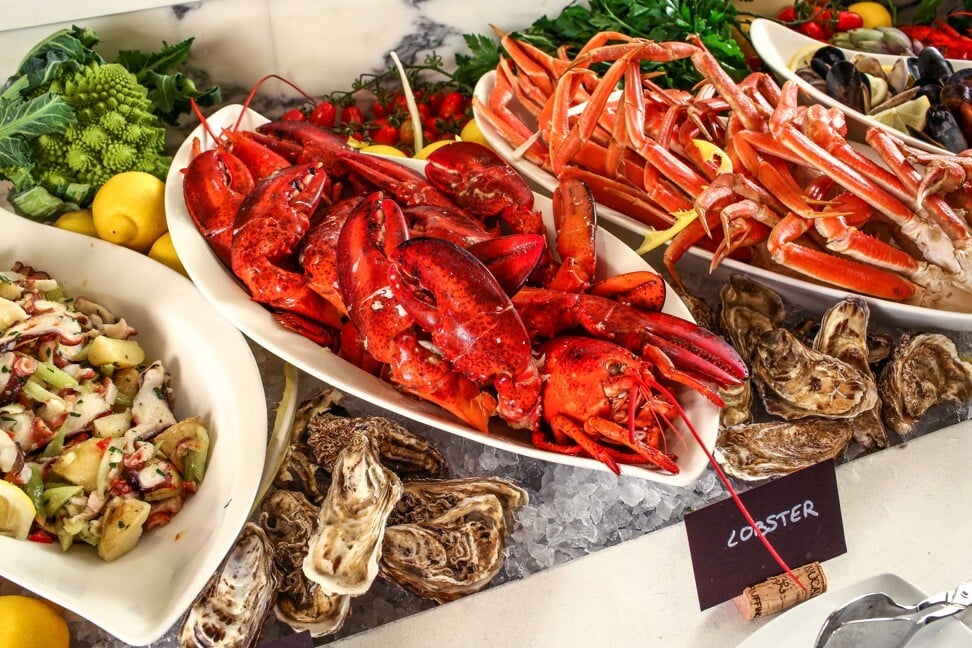
Everyday favourite dishes on the royal table would raise a few eyebrows today.
1. Grilled beaver’s tails – usually served on Fridays, the day when only fish was supposed to be consumed. Conveniently, medieval people classified beaver as a fish back then.
2. Whale and porpoise were favourites of Henry’s first wife, Catherine of Aragon, and were served on Fridays as well. They were cheap and one could feed a lot of people. They were either boiled or roasted.
3. Internal organs – nose to tail is not a new concept as medieval cooks did not like wasting any part of the animals either. Beef lungs, spleen and udders preserved in brine or vinegar were regarded as delicacies.
4. Eel, cod, herring, crab, trout, salmon, and every other aquatic beast – there was nothing Henry would not eat.
Vast quantities of beer and wine were served with every meal. Historians estimate that 600,000 gallons of ale (enough to fill an Olympic-size swimming pool) and 75,000 gallons of wine (enough to fill 1,500 bathtubs) were consumed annually at Hampton Court.
Elizabeth I (reigned from 1558-1603)
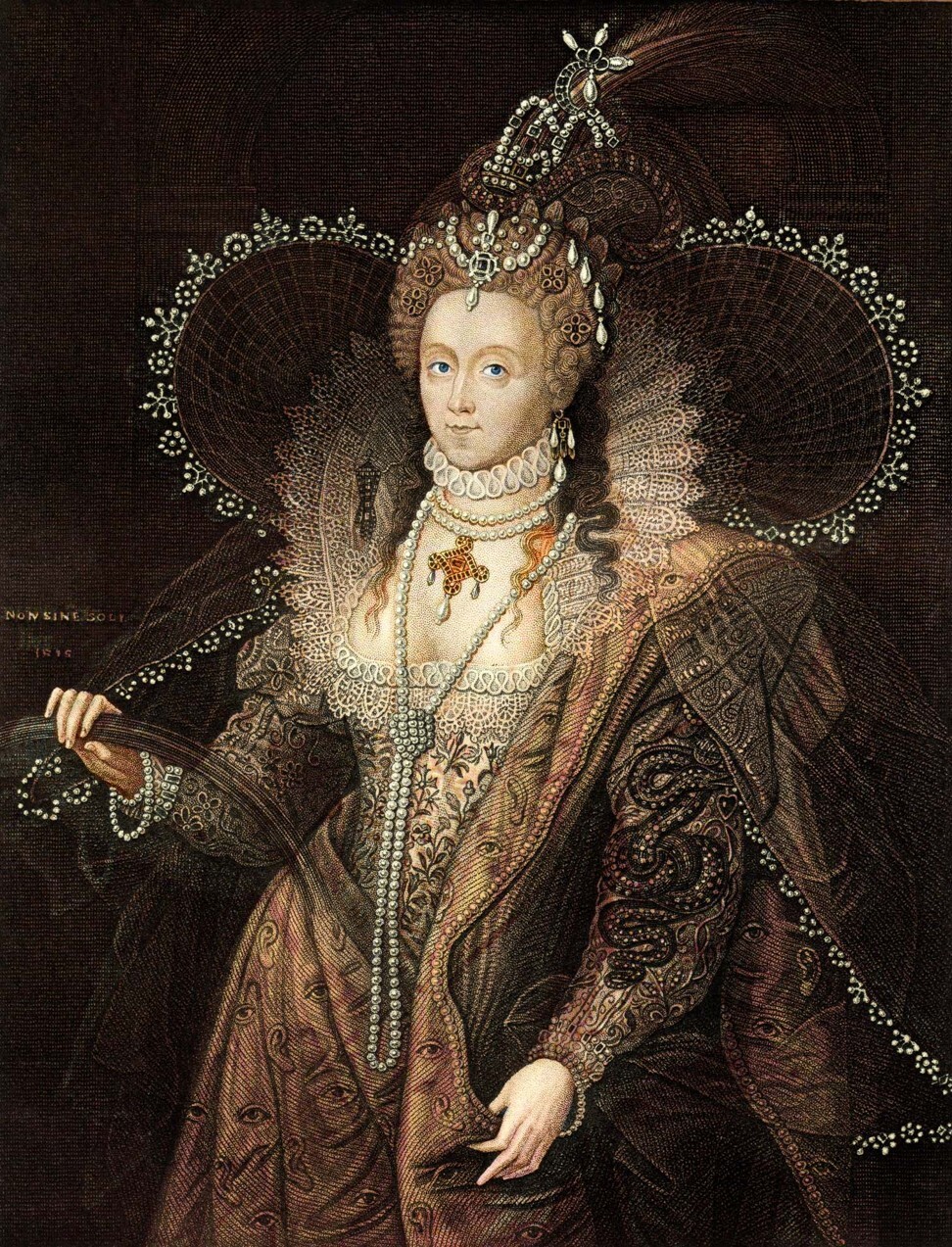
By the end of the Tudor era, banquets had become more lavish and creative. With the explorers returning from the New World with exotic edibles, Elizabethan banquets birthed what is now known as the turducken. Turkeys were brought to England and became popular Christmas fare but not like we have today. The Tudor Christmas Pie featured a rectangular pie crust that enveloped a turkey stuffed with partridge stuffed with pigeon. The three-bird roasts lived on until the 19th century when the pies were served cold.
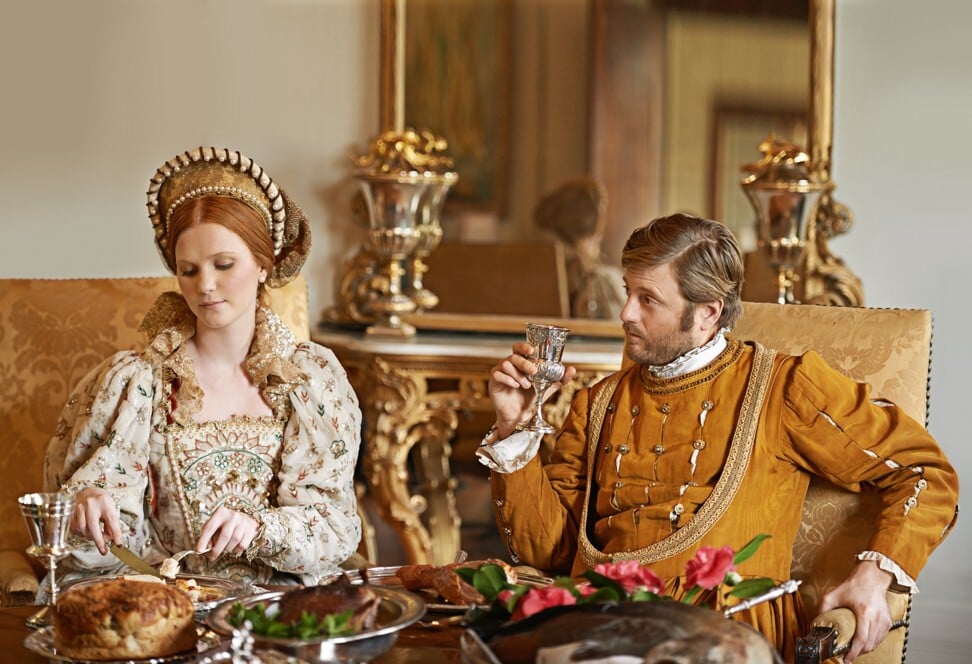
Soon after her father Henry VIII died, a tally was made of Elizabeth I’s annual household provisions. It featured 1,240 oxen, 8,200 sheep, 2,330 deer, 760 calves, 1,870 pigs and 53 wild boars – that’s a lot of sheep and deer.
Queen Victoria (reigned from 1837-1901)
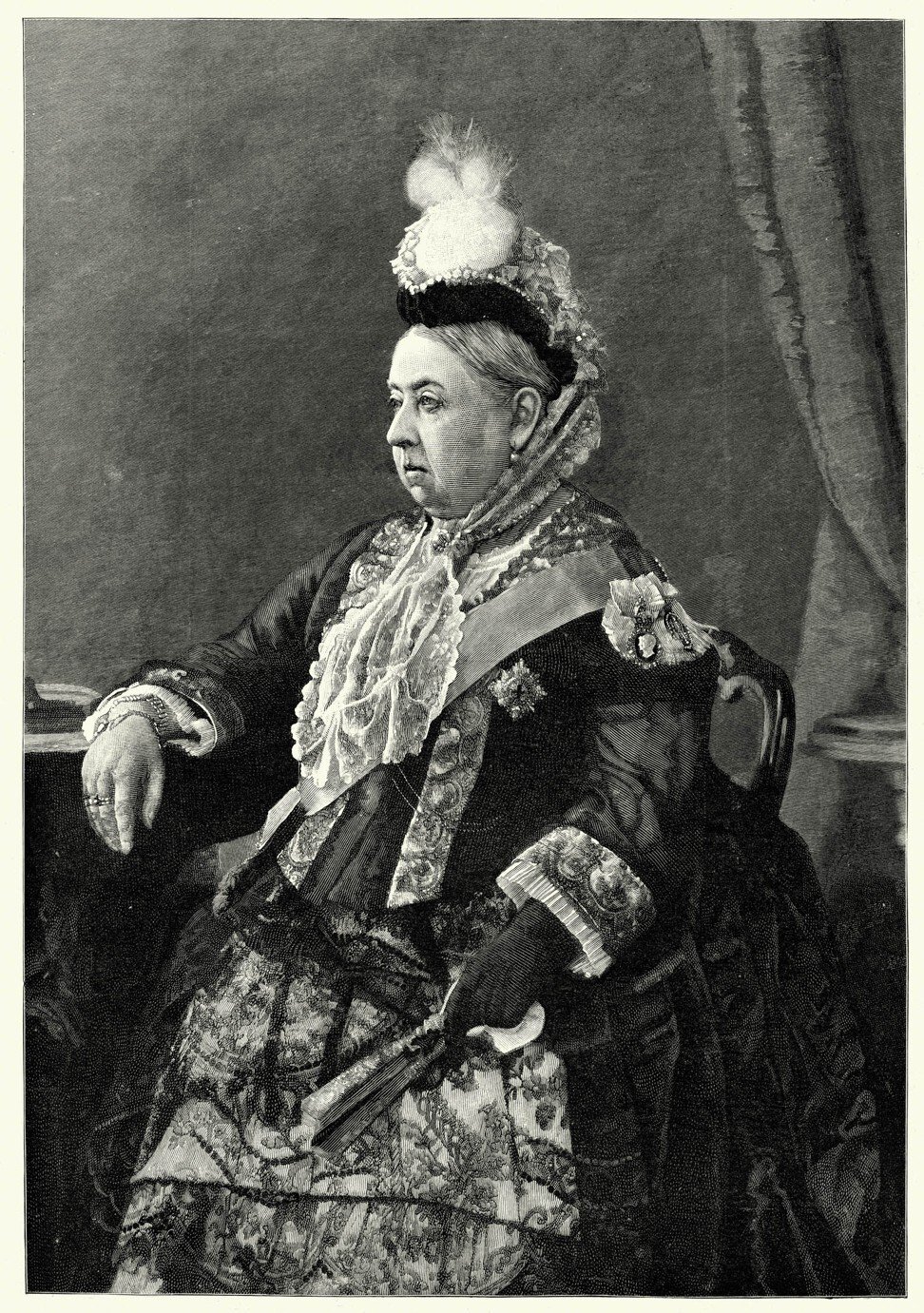
Known as the greedy queen, Victoria loved her food. And diet. What diet? She loved meat as much as dessert. She could easily have inspired the idea of the buffet as she loved to have a lot of choices for breakfast. The palace chef would prepare a mainly protein heavy breakfast such as eggs on toast, smoked haddock, fish, porridge and she loved lamb chops.
For dinner, the royal menu always started with soup and featured several courses. Queen Victoria’s favourite soup was a hard-to-make pale consomme with clarified veal stock and egg shells. Next was a fish dish, she loved turbot and whitebait, then a meat dish, she loved roast beef, then always a dessert. There was always a buffet table, too, with meat such as venison, brawn, marrowbones and more beef.
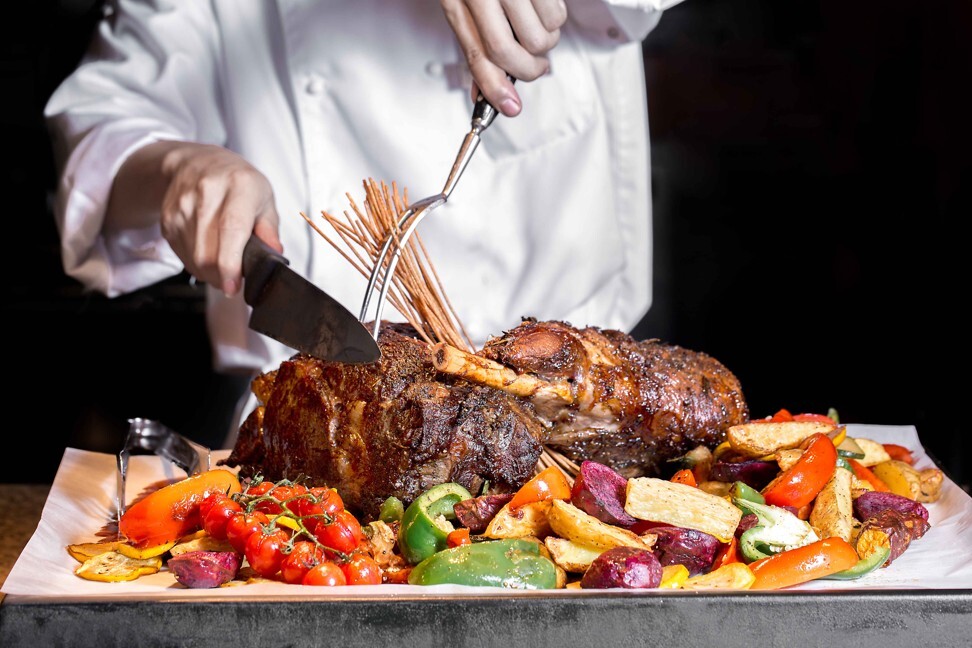
Her food choices might seem tame compared to those of her ancestors, but it was unusual for women to eat so much back then. These were the days when noble women would deprive themselves of food to stay slim and even swallow tapeworms to stay dangerously thin.
When Victoria was young, she was only allowed to eat plain food and historians say that sometimes her dinner comprised only bread and milk. She vowed to eat richer food when she was older. And she kept that promise.
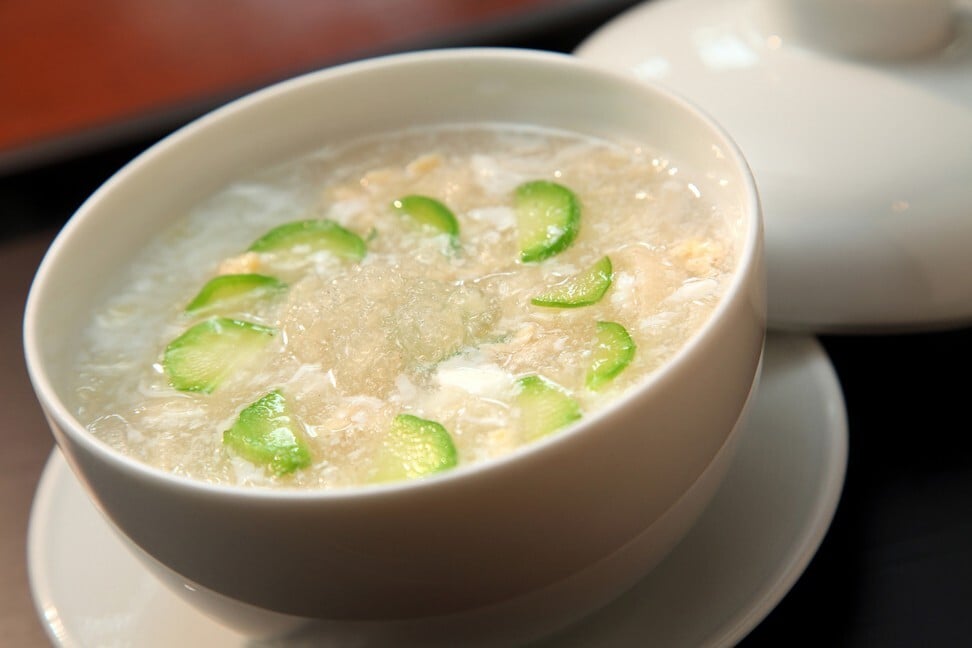
Victoria was a fast eater, and those dining with her were only allowed to eat when she ate, and had to stop when she stopped. That couldn’t have been much fun for slow eaters. She was said to be extremely rude when hungry, and hardly spoke during meal times. She also never liked a pause between courses – she liked those dishes to keep on coming. She had a notorious sweet tooth and was partial to cranberry pie with cream. She could also knock back a few drinks, especially Scotch whisky, which she loved with soda water.
She was an adventurous eater, and would try new things like bird’s nest soup, ostrich egg omelette and as Empress of India, she loved a good curry.